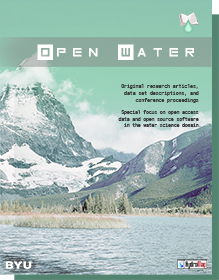Article Title
Using Catchment Modeling Framework for Modeling of water and pesticide fate at hillslope scale
Abstract
Control and reduction of water contamination by pesticides are major issues for the protection of aquatic ecosystems. In order to better understand and formalize the main pathways of pesticides transport, the Catchment Modeling Framework (Kraft et al., 2011) has been chosen, which is an open source hydrological framework providing a spatial distribution with an object-oriented approach. Modularity characteristic of CMF, allows users given a modular design to our landscape, and to choose equations describing flux connection between hydrological response units either in surface and subsurface, and to add new modules and functions.
The aim of this study is to better understand the main pathways of water and solute transport at the hillslope scale. Until now, the mechanisms involved are known but not well quantified. Therefore, we seek to represent relevant processes dominating water transfer from the agricultural land to the surface water, with a specification of the behaviour of each hydrological response unit, depending on the agro-pedo-climatical context. Given these objectives, we use a 2D model to describe a behaviour of a virtual hillslope.
As an application, we will focus on testing some corrective solutions such as the establishment of vegetative filter strips, ditches ...etc, at different positions on the hillslope, and on studying the effect of the landscape's organization change with a suitable degree of complexity. An experimental catchment, located in Beaujolais vineyard (France) is used to settle the application.
Validation of our modeling approach will be done by comparison of several virtual hillslopes scenarios with Hydrus 2D (Simunek et al., 1999) for water and solute transport. In perspective, the modeling will be confronted to real data on the Morcille Irstea’s experimental hillslope (France, Beaujolais).
BYU ScholarsArchive Citation
Djabelkhir, K.; Kratt, P.; Lauvernet, C.; and Carluer, N.
(2013)
"Using Catchment Modeling Framework for Modeling of water and pesticide fate at hillslope scale,"
Open Water Journal: Vol. 2:
Iss.
1, Article 8.
Available at:
https://scholarsarchive.byu.edu/openwater/vol2/iss1/8
